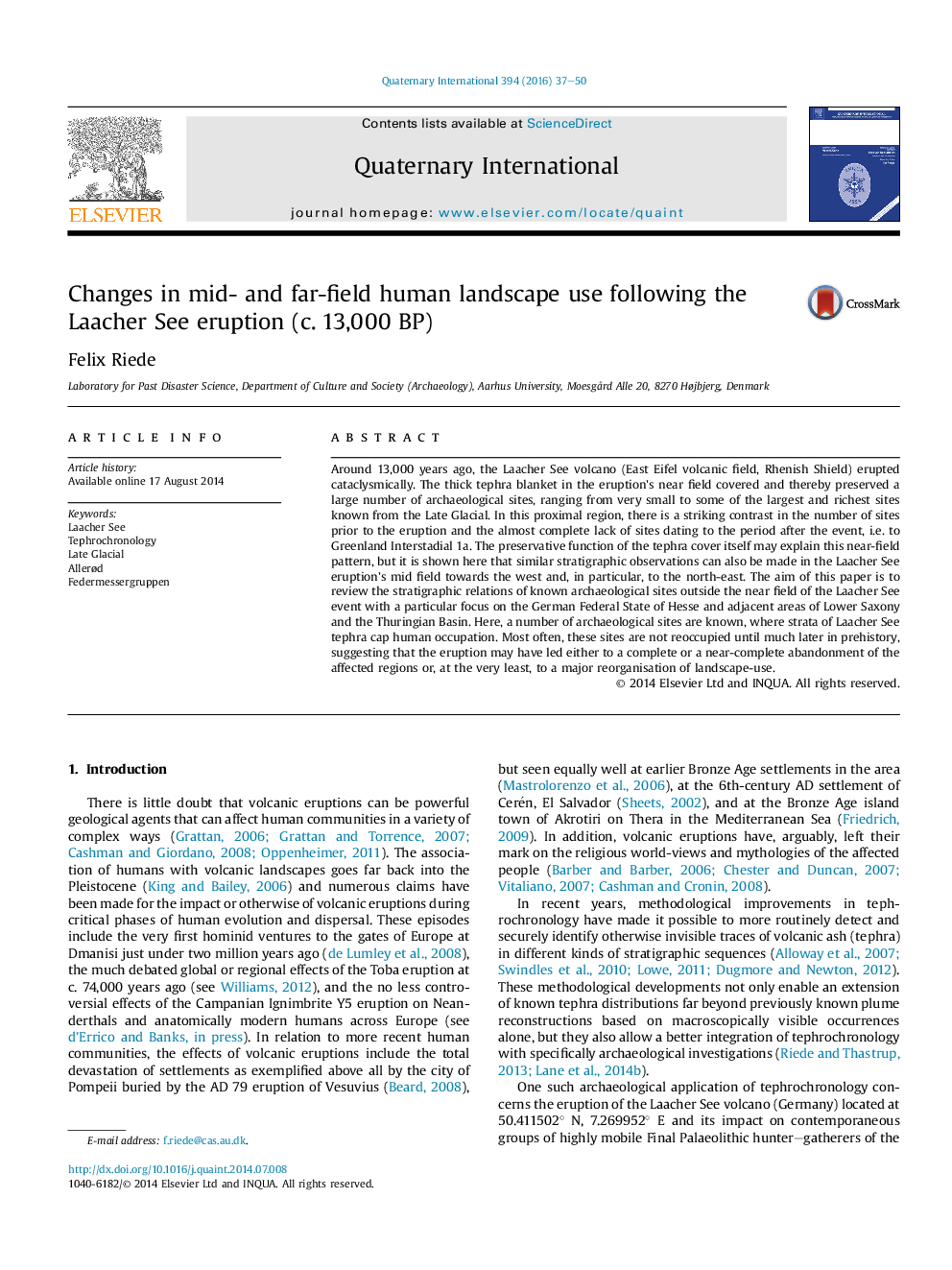| کد مقاله | کد نشریه | سال انتشار | مقاله انگلیسی | نسخه تمام متن |
|---|---|---|---|---|
| 1040305 | 1484104 | 2016 | 14 صفحه PDF | دانلود رایگان |

Around 13,000 years ago, the Laacher See volcano (East Eifel volcanic field, Rhenish Shield) erupted cataclysmically. The thick tephra blanket in the eruption's near field covered and thereby preserved a large number of archaeological sites, ranging from very small to some of the largest and richest sites known from the Late Glacial. In this proximal region, there is a striking contrast in the number of sites prior to the eruption and the almost complete lack of sites dating to the period after the event, i.e. to Greenland Interstadial 1a. The preservative function of the tephra cover itself may explain this near-field pattern, but it is shown here that similar stratigraphic observations can also be made in the Laacher See eruption's mid field towards the west and, in particular, to the north-east. The aim of this paper is to review the stratigraphic relations of known archaeological sites outside the near field of the Laacher See event with a particular focus on the German Federal State of Hesse and adjacent areas of Lower Saxony and the Thuringian Basin. Here, a number of archaeological sites are known, where strata of Laacher See tephra cap human occupation. Most often, these sites are not reoccupied until much later in prehistory, suggesting that the eruption may have led either to a complete or a near-complete abandonment of the affected regions or, at the very least, to a major reorganisation of landscape-use.
Journal: Quaternary International - Volume 394, 11 February 2016, Pages 37–50